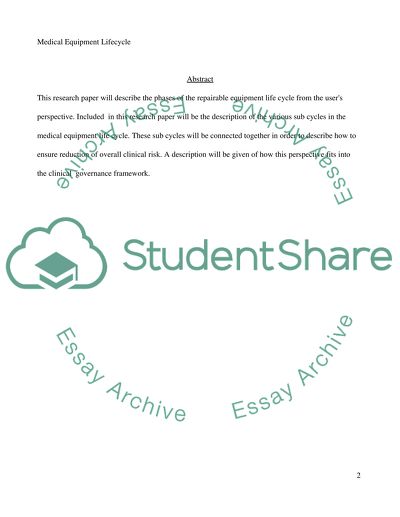Cite this document
(“Medical equipment lifecycle ( Medical Equipment & Technology Services Essay”, n.d.)
Medical equipment lifecycle ( Medical Equipment & Technology Services Essay. Retrieved from https://studentshare.org/engineering-and-construction/1462798-medical-equipment-lifecycle-medical-equipment
Medical equipment lifecycle ( Medical Equipment & Technology Services Essay. Retrieved from https://studentshare.org/engineering-and-construction/1462798-medical-equipment-lifecycle-medical-equipment
(Medical Equipment Lifecycle ( Medical Equipment & Technology Services Essay)
Medical Equipment Lifecycle ( Medical Equipment & Technology Services Essay. https://studentshare.org/engineering-and-construction/1462798-medical-equipment-lifecycle-medical-equipment.
Medical Equipment Lifecycle ( Medical Equipment & Technology Services Essay. https://studentshare.org/engineering-and-construction/1462798-medical-equipment-lifecycle-medical-equipment.
“Medical Equipment Lifecycle ( Medical Equipment & Technology Services Essay”, n.d. https://studentshare.org/engineering-and-construction/1462798-medical-equipment-lifecycle-medical-equipment.


